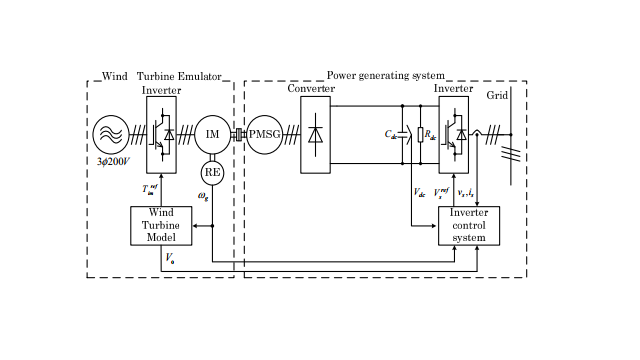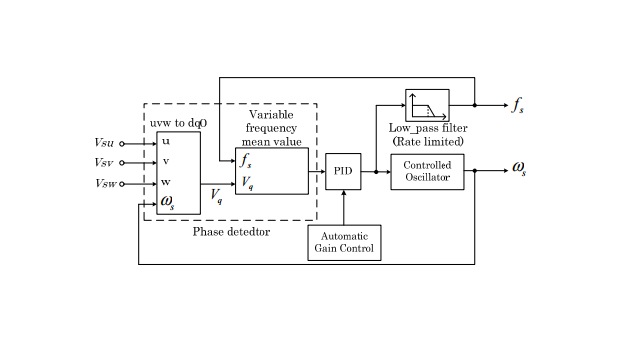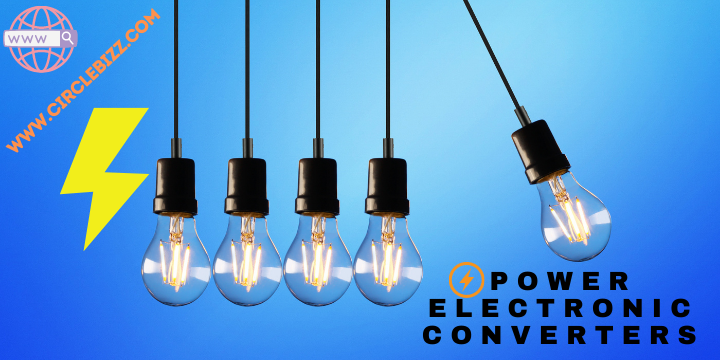The Power Electronic Converters used for the Control of Permanent Magnet Synchronous Generator for Wind Applications.
Abstract (Power Electronic Converters pdf)
The Power Electronic Converters used for the Control of Permanent Magnet Synchronous Generator is predominantly utilized in the present breeze vitality advertise. Mirroring the most recent breeze vitality advertise patterns and research articles, this paper introduces a study on imperative electrical designing viewpoints for Power Electronic Converters used for the Control of Permanent Magnet Synchronous Generator based megawatt-level breeze vitality transformation frameworks. A far reaching examination on power converter topologies for wind turbines, lattice coordination of wind ranches, advanced control plans, blame ride-through consistence strategies, and future patterns is introduced. The refreshed piece of the overall industry, innovation patterns, wind turbine items data, inside and out specialized investigation, and promising examination works featured in this paper will assist the perused with understanding the cutting edge and developing advances for Power Electronic Converters used for the Control of Permanent Magnet Synchronous Generator and wind vitality transformation frameworks.
Introduction
These days, with overall acknowledgment of the presence of an unnatural weather change (Stix, 2006), the outflow of ozone depleting substances (GHG) has likewise been concurred generally as its essential driver. Barring human exercises, the consuming of non-renewable energy sources is the real purpose behind creating GHG. To control the crumbling circumstance, wind vitality has turned into the quickest developing sustainable power source globally (USDE, 2014). Until 2017, the worldwide combined establishment of wind turbines has achieved 539 GW (GWEC, 2017). With the improvement of wind vitality, wind control transformation innovation has encountered a fast advancement quickly also. The nonstop development popular for wind vitality advances the improvement of bigger breeze turbines, on the grounds that the vast turbines can catch more twist control with lower establishment and support costs, contrasted with the gathering of little turbines. The size and limit of business wind turbines have exponentially expanded in the course of recent years, and has as of now achieved the dimension of 10MWs]. In wind vitality change frameworks, Power Electronic Converters used for the Control of Permanent Magnet Synchronous Generator with full-scale control converters have been generally received, because of their remarkable highlights, for example, high-control thickness, no need of excitation, and high productivity.
Problem statement
As referenced in Section 3.1, dissimilar to the Double Fed Induction Generator (DFIG), the power converter for a Permanent Magnet Synchronous Generator (PMSG) needs to exchange all the power created by the breeze turbine and thus must be fit for taking care of this power.
Subsequently, in this venture, a reproduction of a PMSG wind turbine framework including the machine side converter will be directed so as to assess the misfortunes found in the influence hardware gadgets and any subordinate inductive/capacitive parts in the converter. Economically accessible gadgets from the real producers, Siemens, will be utilized to give information for the power hardware segments.
Tests all through the working scope of the PMSG will be dissected, and talk on how the misfortunes in the converters could be limited through appropriate determination of the gadgets ought to be seen.
Besides, on fulfilment of the above destinations, further research on the elective materials which builds control gadgets, (for example, GaAs, GaN, SiC and so on.) might be completed, to examine whenever enhanced execution could be accomplished through their utilization.
Finally, the wind generator framework utilizing PMSG and diode connect rectifier can establish the minimal effort converter. Be that as it may, In the past the present investigation, we propose a diode connect rectifier technique as the framework linkage framework to be utilized in the breeze control age framework, has directed an execution assessment by re-enactment. Also, it proposed a windmill emulator there is no need of wind burrow offices so as to complete the genuine confirmation. In this paper, it is report that affirms the activity of the framework interconnection inverter control side of the diode connect rectifier converter strategy. The windmill rotational speed is controlled to amplify the proficiency of wind turbine against wind speed in low-and centre range.
There were such a large number of techniques proposed from most recent couple of years for the augmentation limit of wind with power extraction, it is less demanding presently to establish what one is adaptable to pick. Some specific techniques could make the strategy all the clearer where the full forcing confinement is important to make the higher memory with condition of information to manage it. The full region has sensor with turbine qualities to make the strategy increasingly summed up.
Permanent Magnet Synchronous Generators (PMSG) have the association with T and K to the power t and I to the power a. Additionally E is equivalent to K to the power c and in this condition the rakish rotor speed and I to the power a have the stator for current. So it is in reality exceptionally common that E square equivalent to V square in addition to I to the power (a) which expressed in condition one alongside Ls entire square. So the condition would be
The power factor at the mains side of the converter is free of the generator control factor. The way that a power electronic converter at first produced for modern drives can be built to proficiently couple an explicitly created PM synchronous generator to the network makes the first outcome. This sort of converter is accessible in power goes up to 250 kW and can be utilized for PM synchronous and offbeat machines. The test stage including its propelled estimation gear is one of only a handful few revealed in writing with respect to improvement of changeless magnet wind turbine generators. Results for the lattice association of the synchronous generator utilizing the power electronic converter and test stage incorporate the productivity bends for the generator, for the converter and all out proficiency characterized as the proportion of the electrical power conveyed to the lattice to mechanical info control.
Wind energy conversion systems
Wind energy is named as the quickest expanding sustainable wellspring of vitality on earth. In a decade ago the normal yearly development rate of wind turbine establishment is in excess of 30 percent. (Chen Z, 2006).
The invaluable component of wind vitality change framework is the cost-intensity which it has in it and wind generator framework is critical to talk about. At an in front of the pack, the contemporary breeze turbine been classified with the specific highlights of controlling which rouses to make the drive train into various sorts while the full intensity of plausibility of speed variety is expected to tweak. With the quickly developing factors speed and the immediate potential outcomes of planning and controlling the breeze vitality frameworks, the full productivity and the vitality catch of making the framework is likewise essential. There have been numerous thoughts of intensity point following strategy connected. The MPPT calculation have the kind of tip controlling in speed, the flag and power criticism.
The proposed wind generator framework is bring down expense than the regular breeze control framework. Notwithstanding, the converter can’t control the generator torque. To put it plainly, the converter can’t control the breeze turbine rotational recurrence. At that point, the inverter manages the DC interface voltage so as to control the generator torque.

Fig 1: Structure of wind power generation system using diode bridge rectifier converter.
The conversion control framework keeps up the DC connect voltage. Additionally, this working reach compares to the scopes of wind speed. In wind speed under the appraised breeze speed, the windmill speed control is done with the inverter control framework. Solidly, the inverter control framework modifies the electric torque of PMSG by modifying the DC connect voltage, and it controls the windmill speed. also, the inverter control framework does the electric power control. The inverter control framework is arranged by the accompanying conditions of PI speed controller.
The DC interface voltage is controlled by directing the dynamic current. The DC interface voltage reference is determined by subtracting yields of PI speed and power controllers from consistent DC connect voltage reference by the accompanying conditions.
The responsive current reference is steady of zero to keep the power factor at 1. The yield voltage references are determined by the accompanying conditions.
Fig. 2 demonstrates the stage bolted circle (PLL) control framework. The PLL control framework is given in the library of MATLAB/Simulink.

Fig 2: Phase locked loop control system
The circuit comprises the three-stage input flag is changed over to a dq0 pivoting outline utilizing the precise speed of an inward oscillator.
The quadrature hub flag Vq is corresponding to the stage distinction between the matrix framework voltages of Vsu, Vsv, and Vsw and the inward oscillator turning outline.
The Vq is separated with the variable recurrence mean esteem square. The PID controller, with a discretionary programmed gain control, keeps the stage contrast to 0 by following up on a controlled oscillator.
The PID yield, comparing to the precise speed ωs, is sifted and changed over to the recurrence fs in hertz, which is utilized by the mean esteem.
Power Control of PMSG
Amid quite a long while from past Permanent Magnet Synchronous Generators (PMSGs) are having utilized by wind turbine application in view of their adaptability in low weight and the kind of pneumatic force with higher proficient method for not having gearless structure. (Spooner, 1996). The power extraction accessibility of turbine and creating them accurately is the most critical objectives in wind turbines. In this way, the AC to DC to AC is a perfect structure for the transformation control with the breeze turbine help. The structure of DC to AC help converter can make extraction to sort most extreme power while utilizing the DC transport control yield of the full leeway. (Weisser, 2005). The power which extricate wind is the third work of wind and the electronic power is connected with the converter to make the incredible range with qualities and the extraordinary preferences is conveyed with different models and the controlling force has the rotor speed to make the most ideal approach to apply.
The PMSG synchronous power control generator mounted on the test stage is a model. Its electromagnetic structure has been streamlined for least consonant substance of incited voltage and greatest productivity utilizing limited component computations.
This power control generator is developed from standard engine parts in a completely encased lodging without cooling ribs and without fan and fan cover. The casing is made of steel Fe370 and is hot zinc plunged and covered. The attractive field is provided by NdFeB perpetual magnets with spiral magnetisation. They are mounted on a post wheel specifically determined by the breeze turbine cutting edges utilizing an inside stationary tempered steel shaft with rotational accelerates to 350 rpm. The stator is fabricated utilizing standard stator sheets fitted with 54 spaces. The windings having particularly ensured class F segregation are three stage star associated. By methods for a particular stator winding structure, attractive holding of the post wheel is about wiped out, with the end goal that the beginning torque depends adequately on bearing grating as it were.
The materials for the intensity of PMSG are predominantly connected with Wind show, wind turbine, the greatest power extraction is the yield intensity of turbine and the speed have distinctive approach to make. (Sajedi, 2011). The improvement dimension of root speed isn’t same in many breeze speeds in light of the fact that there is most elevated amount of intensity of turbine in it. On account of PMSG, the entire connection of torque and acceptance voltage is given underneath:
Proposed Approach
In this task, a model of a PMSG wind turbine framework including the converter on the machine side will be set up first, so as to assess the misfortunes found in the influence hardware gadgets and any subordinate inductive/capacitive segments in the converter. Most reproduction is intended to be finished in Matlab/Simulink with following advances:
- A wind turbine will be displayed and its approval will be led to test the model under various breeze speed, just as
- A wind turbine associated converter (before the DC-connection to the lattice associated converter) will be demonstrated
- Developing hypothetical connection between the control factors to get the higher power from framework. For example, the generator control have the association with yield dc voltage where the useful obligation have the high esteem bearer with the generator proportion to gather and the acquiring power is settled with hypothetical survey where the regard to make obligation proportion is critical. (K, Amei, 2002).
Conclusions
As the breeze turbines develop, numerous advancements relate with it progressively and they enhance in their zone with application. The PMSG is under perception while the uncommon criteria is on. A large portion of the PMSG wind framework have the voltage of generator with the changed over into the DC voltage where the diode of a similar line correct and the voltage controls the most noteworthy intensity of turbine. It is critical to interface with the lattice to ensure that the infusion dynamic and receptive power control is imperative to ensure the reenactment is proceeded.
References
Busca, C., Stan A., Stanciu, T. and Stroe, D. I. (2010) Control of Permanent Magnet Synchronous Generator for Large Wind Turbines. 2010 IEEE International Symposium on Industrial Electronics, pp. 3871-3876.
CHEN Z, BLAABJERG F: (2006) ‘Wind energy-the world’s fastest growing energy source’, IEEE Power Electron. Soc. Newsl., 18, (3), pp. 15–19
GWEC (2017) Global wind report annual market update 2017. Global Wind Energy Council.
- Amei , Y. Takayasu , T. Ohji and M. Sakui (2002) “A maximum power control of wind generator system using a permanent magnet synchronous generator and a boost chopper circuit,” Proc. Power Conv., vol. 3, p. 1447.
Lotfi, S. and Sajedi, M. (2012) Modeling and application of permanent magnet synchronous generator (PMSG) based variable speed wind generation system, International Journal of the Physical Sciences, Vol. 7(3), pp. 370 – 376.
Li, H. and Chen, Z. (2007) Overview of different wind generator systems and their comparisons. IET Renewable Power Generation, Vol. 2 (2), pp.123-138.
Li, S., Haskew, T. A., Muljadi, E. and Serrentino, C. (2009) Characteristic Study of Vector-controlled Direct-driven Permanent Magnet Synchronous Generator in Wind Power Generation. Electric Power Components and Systems, Vol. 37 (10), pp.1162-1179.
Lynn, P. A. (2012) Onshore and offshore wind energy: an introduction.
Musunuri, S. and Ginn, H. L. (2011) Comprehensive Review of Wind Energy Maximum Power Extraction Algorithms. 2011 IEEE Power and Energy Society General Meeting.
Sajedi S, Kahlifeh F, Karimi T, Khalifeh Z (2011). Maximum power point tracking of variable speed wind energy conversion system. Int. J. Phys. Sci., 6(30).
Shukla, R. D. and Tripathi, R. K. (2012) Maximum Power Extraction Schemes & Power Control in Wind Energy Conversion System, International Journal of Scientific and Engineering Research, Vol. 3 (6), pp. 1-6.
Stix, G. (2006) A climate repair manual. Scientific American Special Issue: Energy’s Future Beyond Carbon, vol. 295 (3), pp.24-27.
Spooner E, Williamson AC (1996). Direct coupled permanent magnet generators for wind turbine applications. IEE Proceedings of Electric Power Applications, 143(1): 1–8.
Umak, D. A., Thakare, T. S. and Kirpane, R. K. (2017) Study on Maximum Power Extraction Control for PMSG based Wind Energy Conversion System, International Research Journal of Engineering and Technology, Vol.4 (1), pp. 1444-1448.
Weisser D, Garcia RS (2005). Instantaneous wind energy penetration in isolated electricity grids: concepts and review. Renewable Energy, 30.
Wiley Wei, C., Zhang, Z., Qiao, W. and Qu, L. (2014) Intelligent Maximum Power Extraction Control for Wind Energy Conversion Systems Based on Online Q-learning with Function Approximation. Faculty Publications from the Department of Electrical and Computer Engineering. 264.
Power Electronic Converters pdf, Power Electronic Converters pdf, Power Electronic Converters pdf, Power Electronic Converters pdf, Power Electronic Converters pdf, Power Electronic Converters pdf, Power Electronic Converters pdf, Power Electronic Converters pdf, Power Electronic Converters pdf, Power Electronic Converters pdf, Power Electronic Converters pdf, Power Electronic Converters pdf prepared by :
Written by
Email: [email protected]

